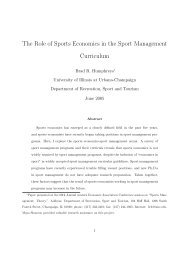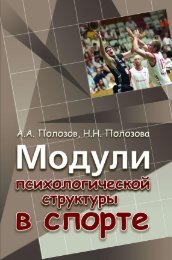Totally Tae Kwon Do Magazine - Issue 17 - Usadojo
Totally Tae Kwon Do Magazine - Issue 17 - Usadojo
Totally Tae Kwon Do Magazine - Issue 17 - Usadojo
Create successful ePaper yourself
Turn your PDF publications into a flip-book with our unique Google optimized e-Paper software.
We can now see that there is a definite<br />
bias towards the right leg in the colour belt<br />
patterns; 59% of the kicks are with the right<br />
leg. But, there are only 29 kicks in the<br />
colour belt patterns. Rather a small number<br />
to draw any firm conclusions about TKD<br />
patterns as a whole. Let’s now look at the<br />
black belt patterns, where the number of<br />
kicks increases.<br />
Black Belt Patterns<br />
The first two black belt patterns (Kwang<br />
Gae and Po Eun) are symmetrical, and<br />
contain equal kicks<br />
on the right and left<br />
sides. In Kwang<br />
Gae, each leg<br />
performs a pressing<br />
kick, a middle side<br />
piercing kick and a<br />
middle front snap<br />
kick, while in Po<br />
Eun each leg<br />
performs a single<br />
pressing kick.<br />
But when we get to<br />
the third and final<br />
1st degree pattern,<br />
Gye Baek, the<br />
symmetry is lost and<br />
the bias towards the<br />
right leg is quite<br />
astonishing. For the<br />
right leg, there is a<br />
low twisting kick,<br />
middle side piercing<br />
kick, two middle<br />
turning kicks (one of<br />
them is while shifting) and a flying side<br />
piercing kick. For the left leg, there is a<br />
single low side front snap kick.<br />
The first 2nd degree pattern, Eui Am, is<br />
symmetrical, with four kicks for each leg.<br />
The next pattern (Choong Jang) is not,<br />
though. For the right leg, there are three<br />
low front snap kicks (one with the knee), a<br />
high turning kick (from a crouched position),<br />
a middle front snap kick, and a middle side<br />
piercing kick. For the left leg, we again find<br />
Left turning kick - from the First TKD World Cup in<br />
Orlando, 2004<br />
a single front snap kick (middle section).<br />
Juche, the third 2nd degree pattern, is one<br />
of the most difficult patterns in <strong>Tae</strong>kwon-<br />
<strong>Do</strong>. It is broadly symmetrical, except for a<br />
few moves, and this is the first and only<br />
pattern where we find more kicks with the<br />
left leg than with the right. Kicks the left leg<br />
performs that the right leg doesn’t are a<br />
pick-shape kick and a slow-motion middle<br />
back piercing kick. <strong>Do</strong>es this make Juche<br />
biased towards lefties? I don’t think so,<br />
because there is another asymmetry in the<br />
kicks. This is in the<br />
form of a flying twodirection<br />
kick, with<br />
the right leg<br />
performing a side<br />
kick and the left a<br />
twisting kick. This<br />
kick may seem even<br />
at first, but in my<br />
opinion it is much<br />
easier for righties to<br />
perform than it is for<br />
lefties. This is<br />
because it is a left<br />
leg take-off, and is<br />
performed in a very<br />
similar manner to a<br />
right leg flying side<br />
kick. I would<br />
therefore say that<br />
while Juche has<br />
more kicks with the<br />
left, overall it is<br />
about even in my<br />
opinion.<br />
The picture improves slightly with the 3rd<br />
degree patterns, although we still find a<br />
right leg bias in Sam Il. Both legs perform a<br />
middle side piercing kick, but for the right<br />
leg there is a middle-section twisting kick<br />
and a sweeping kick, while the left leg has<br />
a low front snap kick.<br />
Yoo Sin and Choi Yong are, however, both<br />
symmetrical, with eight kicks split evenly<br />
between left and right in Yoo Sin, and<br />
twelve kicks split evenly between left and<br />
<strong>Totally</strong> <strong>Tae</strong> <strong>Kwon</strong> <strong>Do</strong> - 61

















